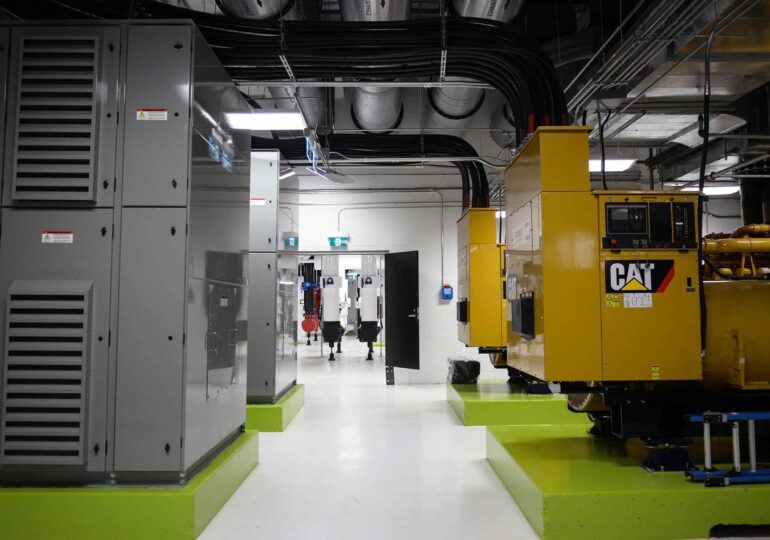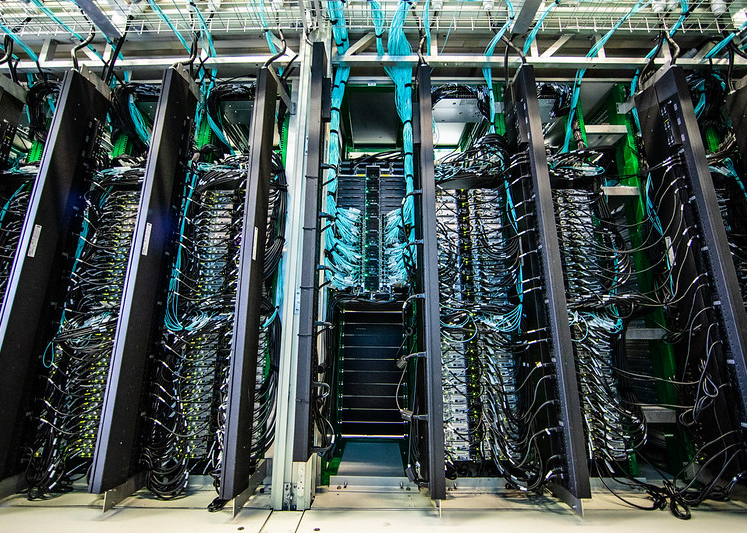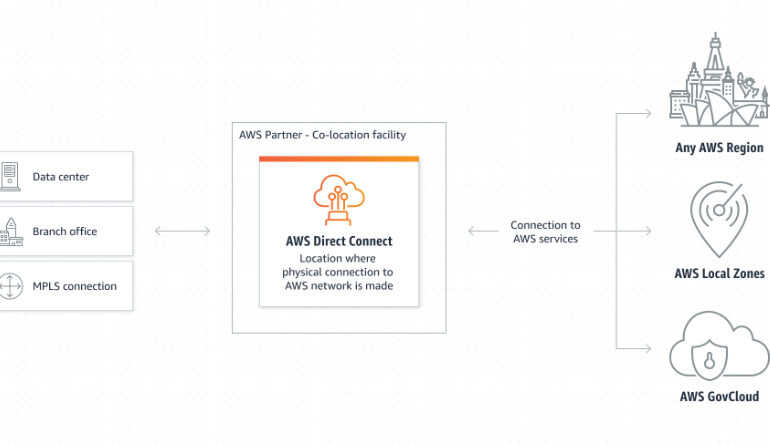What are the benefits and features of SD-WAN and why you should use it for your business

Looking to enhance your business’s network efficiency and performance? Look no further than SD-WAN. With its numerous benefits and advanced features, SD-WAN is revolutionizing the way businesses manage their networks.
In this article we will discuss the following key points:
- Benefits of SD-WAN for businesses
- Features of SD-WAN
- How SD-WAN improves network performance
- Cost savings with SD-WAN
- Enhanced security with SD-WANScalability and flexibility of SD-WAN
- How to choose the right SD-WAN solution for your business
- Case studies of successful SD-WAN implementations
Benefits of SD-WAN for businesses
SD-WAN, or Software-Defined Wide Area Network, is a cutting-edge technology that simplifies network management and optimizes connectivity. It enables businesses to seamlessly connect their various locations, whether they are branch offices, data centers, or the cloud, resulting in improved productivity and cost savings.
SD-WAN offers several key benefits for businesses. Firstly, it provides enhanced network performance by leveraging multiple network connections, such as MPLS, broadband, and LTE. This allows for increased bandwidth, reduced latency, and improved application performance. With SD-WAN, businesses can ensure that critical applications receive the necessary bandwidth while less important traffic is automatically routed over less expensive connections.
Another significant benefit of SD-WAN is its ability to prioritize critical applications by dynamically routing traffic based on real-time conditions. This means that your mission-critical applications, such as VoIP or video conferencing, will always have the bandwidth they need, ensuring uninterrupted communication and collaboration.
Additionally, SD-WAN provides increased network security through its integrated firewall and encryption capabilities, protecting your business’s sensitive data from cyber threats. With the rise in sophisticated cyber attacks, having a secure network infrastructure is crucial for businesses of all sizes. SD-WAN offers advanced security features that can be easily managed and updated from a centralized dashboard, providing peace of mind for businesses.
Features of SD-WAN
SD-WAN comes with a range of features that make it an attractive option for businesses. One of the key features is its centralized management system. With SD-WAN, businesses can manage their entire network from a single interface, simplifying network administration and reducing the need for on-site IT staff. This centralized management allows for easy configuration, monitoring, and troubleshooting of network devices, saving businesses time and resources.
Another notable feature of SD-WAN is its ability to optimize network traffic. SD-WAN uses intelligent traffic routing algorithms to dynamically send traffic over the most efficient path. This not only improves network performance but also reduces costs by utilizing less expensive network connections. SD-WAN can also perform link bonding, where multiple connections are combined to create a larger virtual link, increasing bandwidth and redundancy.
SD-WAN also offers application-aware routing, which allows for the prioritization of specific applications over others. This ensures that critical applications always receive the necessary bandwidth, improving user experience and productivity. Additionally, SD-WAN can perform real-time traffic analysis, allowing businesses to gain insights into their network usage and make data-driven decisions to optimize performance.
How SD-WAN improves network performance
SD-WAN improves network performance through several mechanisms. Firstly, it leverages multiple network connections, such as MPLS, broadband, and LTE, to increase available bandwidth. This allows for faster data transfer and reduced latency, resulting in improved application performance and user experience.
SD-WAN also utilizes intelligent traffic routing algorithms to dynamically send traffic over the most efficient path. By analyzing real-time network conditions, SD-WAN can determine the best route for each packet, ensuring optimal performance. This dynamic routing capability is particularly beneficial for businesses with multiple branch offices or remote workers, as it allows for seamless connectivity and improved collaboration.
Furthermore, SD-WAN can perform link bonding, where multiple connections are combined to create a larger virtual link. This increases bandwidth and provides redundancy, ensuring uninterrupted network connectivity even if one connection fails.
In summary, SD-WAN improves network performance by increasing available bandwidth, reducing latency, and optimizing traffic routing. By leveraging multiple network connections and intelligent routing algorithms, businesses can achieve faster and more reliable network performance.
Cost savings with SD-WAN
One of the significant advantages of SD-WAN is its potential for cost savings. By utilizing less expensive network connections, such as broadband or LTE, alongside traditional MPLS, businesses can significantly reduce their network costs.
SD-WAN’s ability to dynamically route traffic based on real-time conditions allows businesses to make the most efficient use of their available network connections. Less critical traffic can be automatically routed over less expensive connections, while critical applications can utilize the more reliable and higher bandwidth MPLS connection. This not only improves application performance but also reduces costs by utilizing less expensive connections where possible.
Furthermore, SD-WAN’s centralized management system enables businesses to reduce their reliance on on-site IT staff. With SD-WAN, network administration can be performed from a single interface, eliminating the need for IT staff to visit each branch office individually. This centralized management saves businesses time and resources, resulting in cost savings.
Overall, SD-WAN offers businesses significant cost savings through the efficient utilization of network connections and the reduction of on-site IT staff requirements.
Enhanced security with SD-WAN
In today’s digital landscape, network security is a top priority for businesses. SD-WAN comes with advanced security features that enhance network security and protect businesses’ sensitive data from cyber threats.
SD-WAN incorporates integrated firewall capabilities, which provide an additional layer of protection for the network. The built-in firewall can be easily configured and updated from a centralized management system, ensuring consistent security policies across all network devices. This eliminates the need for separate firewall appliances and simplifies network security management.
Additionally, SD-WAN offers encryption capabilities, ensuring that data transmitted over the network is secure and protected from eavesdropping or unauthorized access. This is particularly important for businesses that deal with sensitive information, such as customer data or intellectual property.
By implementing SD-WAN, businesses can enhance their network security and protect their valuable data from cyber threats. The integrated firewall and encryption capabilities, combined with centralized management and monitoring, provide businesses with peace of mind and the assurance that their network is secure.
Scalability and flexibility of SD-WAN
One of the key advantages of SD-WAN is its scalability and flexibility. SD-WAN allows businesses to easily scale their network infrastructure to accommodate changing needs and growth.
With traditional networking solutions, such as MPLS, adding new locations or increasing bandwidth can be a complex and time-consuming process. SD-WAN simplifies this process by providing a centralized management system that allows for easy configuration and provisioning of network devices. New locations can be quickly connected to the network, and bandwidth can be increased or decreased as needed.
Furthermore, SD-WAN supports a wide range of network connections, including MPLS, broadband, and LTE. This flexibility enables businesses to choose the most suitable connection type for each location based on factors such as cost, performance, and availability. SD-WAN’s ability to utilize multiple network connections also provides redundancy, ensuring uninterrupted network connectivity even if one connection fails.
In summary, SD-WAN offers businesses the scalability and flexibility they need to adapt to changing network demands quickly. With its centralized management system and support for various network connections, businesses can easily scale their network infrastructure and choose the most suitable connection type for each location.
How to choose the right SD-WAN solution for your business
When choosing an SD-WAN solution for your business, several factors should be considered to ensure the best fit for your specific needs. Here are some key considerations to keep in mind:
- Network requirements: Evaluate your current network requirements and future growth plans. Consider factors such as the number of branch offices, expected bandwidth needs, and desired network performance.
- Security: Assess the security features offered by different SD-WAN solutions. Look for integrated firewall capabilities, encryption, and secure remote access options.
- Scalability: Consider how easily the SD-WAN solution can scale to accommodate your business’s growth. Look for solutions that offer centralized management and provisioning capabilities to simplify network expansion.
- Management and monitoring: Evaluate the management and monitoring capabilities of different SD-WAN solutions. Look for solutions that provide a centralized dashboard for easy configuration, monitoring, and troubleshooting.
- Compatibility: Consider how well the SD-WAN solution integrates with your existing network infrastructure and applications. Look for solutions that offer compatibility with your current networking equipment and can seamlessly integrate with your business applications.
- Support and service: Assess the support and service offerings provided by different SD-WAN vendors. Look for vendors that offer responsive customer support, regular software updates, and training resources.
By carefully considering these factors, you can choose the right SD-WAN solution that meets your business’s specific requirements and ensures a smooth implementation.
Case studies of successful SD-WAN implementations
To further illustrate the benefits and features of SD-WAN, let’s take a look at a few case studies of successful SD-WAN implementations:
- Company A: Company A, a multinational corporation with branch offices in different countries, implemented SD-WAN to improve network performance and reduce costs. By leveraging multiple network connections, SD-WAN increased available bandwidth and reduced latency, resulting in faster application performance and improved user experience. Additionally, SD-WAN’s ability to dynamically route traffic over less expensive connections allowed Company A to achieve significant cost savings.
- Company B: Company B, a retail chain with numerous branch locations, implemented SD-WAN to enhance network security and simplify network management. SD-WAN’s integrated firewall capabilities provided an additional layer of security, protecting Company B’s customer data from cyber threats. Furthermore, SD-WAN’s centralized management system allowed for easy configuration and monitoring of network devices, reducing the need for on-site IT staff.
- Company C: Company C, a software development company, implemented SD-WAN to enable seamless collaboration between their globally distributed development teams. SD-WAN’s ability to prioritize critical applications, such as video conferencing and real-time collaboration tools, ensured uninterrupted communication and enhanced productivity. Additionally, SD-WAN’s support for multiple network connections provided redundancy, ensuring reliable network connectivity even if one connection failed.
These case studies highlight the diverse benefits and features of SD-WAN and how it has helped businesses improve their network performance, security, and scalability.
Conclusion: The future of SD-WAN in business networking
In conclusion, if you want to optimize your business’s network performance, enhance security, and reduce costs, implementing SD-WAN is a smart decision. SD-WAN’s numerous benefits, such as improved network performance, cost savings, enhanced security, and scalability, make it an attractive option for businesses of all sizes.
As businesses increasingly rely on cloud-based applications and remote connectivity, SD-WAN provides the necessary tools to ensure seamless and secure network connectivity. With its easy deployment and centralized management, SD-WAN offers businesses greater agility and scalability, allowing them to adapt to changing network demands quickly.
Looking towards the future, SD-WAN is poised to play a crucial role in business networking. As technology continues to evolve and business requirements change, SD-WAN will continue to evolve to meet the needs of businesses, providing them with the network infrastructure they need to succeed.
Experience the benefits of SD-WAN and take your business’s network to the next level. Embrace this innovative technology and unlock the full potential of your network.








































